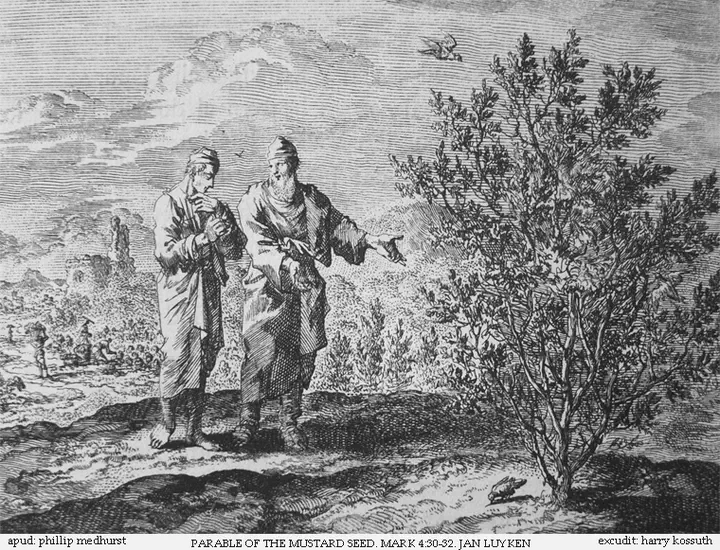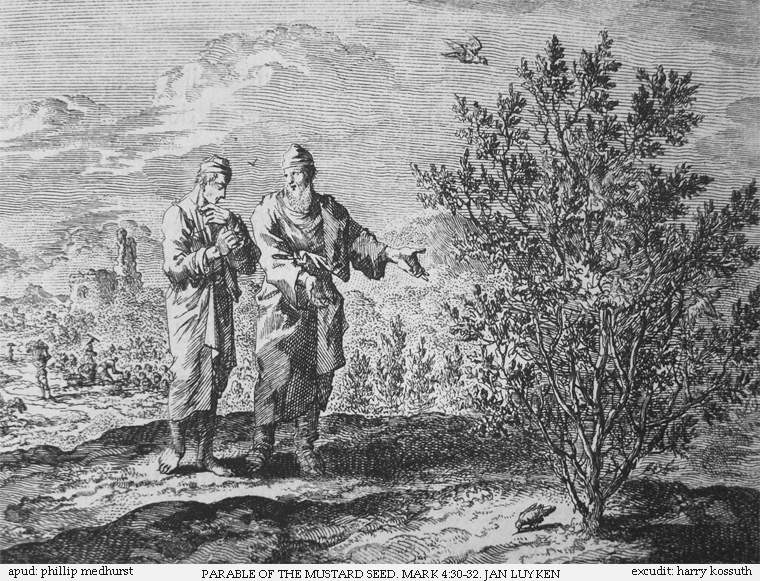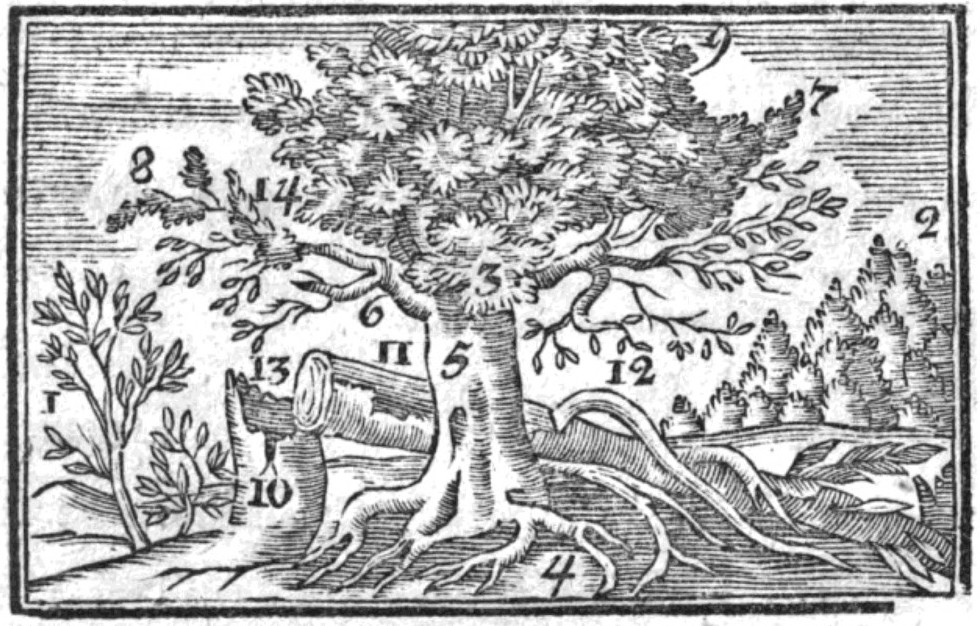
Fr Nadal’s Book is Missing A Sunday! This coming Sunday! The Sixth Sunday after Epiphany, which is one of the swing Sundays which can crop up either just before Lent or just before Advent.
So I’ve found an illustration from Wikipedia as a stop gap for this week.

Gospel in Latin
In illo témpore: Dixit Jesus turbis parábolam hanc : Símile est regnum caelórum grano sinápis, quod accípiens homo seminávit in agro suo : quod mínimum quidem est ómnibus semínibus : cum autem créverit, majus est ómnibus oléribus, et fit arbor, ita ut vólucres caeli véniant, et hábitent in ramis ejus. Aliam parábolam locútus est eis : Símile est regnum caelórum ferménto, quod accéptum múlier abscóndit in farínae satis tribus, donec fermentátum est totum. Haec ómnia locútus est Jesus in parábolis ad turbas : et sine parábolis non loquebántur eis : ut implerétur quod dictum erat per prophétam dicéntem : Apériam in parábolis os meum; eructábo abscóndita a constitutióne mundi.
Gospel in English
Another parable he proposed unto them, saying: The kingdom of heaven is like to a grain of mustard seed, which a man took and sowed in his field. Which is the least indeed of all seeds; but when it is grown up, it is greater than all herbs, and becometh a tree, so that the birds of the air come, and dwell in the branches thereof. Another parable he spoke to them: The kingdom of heaven is like to leaven, which a woman took and hid in three measures of meal, until the whole was leavened. All these things Jesus spoke in parables to the multitudes: and without parables he did not speak to them. That it might be fulfilled which was spoken by the prophet, saying: I will open my mouth in parables, I will utter things hidden from the foundation of the world.
Handwriting Page
This one didn’t line up so easily. You might like to colour the matching words.
| arbor | tree |
|---|---|
| vólucres | birds |
| in ramis | in the branches |
| grano | grain |
| oléribus | of herbs |
You might like to visit the chapter on Tree’s from Comenius’ book Orbis Pictus for more detail on how we name the parts of a tree.

| A Plant, 1. groweth from a Seed. | Planta, 1. procrescit e Semine. |
|---|---|
| A plant waxeth to a Shoot, 2. | Planta abit in Fruticem, 2. |
| A Shoot to a Tree, 3. | Frutex in Arborem, 3. |
| The Root, 4. beareth up the Tree. | Radix, 4. Sustentat arborem. |
| The Body or Stem, 5. riseth from the Root. | Stirps (Stemma) 5. Surgit e radice. |
| The Stem divideth it self into Boughs, 6. and green Branches, 7. made of Leaves, 8. | Stirps se dividit in Ramos, 6. & Frondes, 7. factas e Foliis, 8. |
| The top, 9. is in the height. | Cacumen, 9. est in summo. |
| The Stock, 10. is close to the roots. | Truncus, 10. adhærat radicibus. |
| A Log, 11. is the body fell’d down without Boughs; having Bark and Rind, 12. Pith and Heart, 13. | Caudex, 11. est Stipes dejectus, sine ramis; habens Corticem & Librum, 12. pulpam & medullam, 13. |
| Bird-lime, 14. groweth upon the boughs, which also sweat Gumm, Rosin, Pitch, &c. | Viscum, 14. adnascitur ramis, qui etiam sudant, Gummi, Resinam, Picem, &c. |